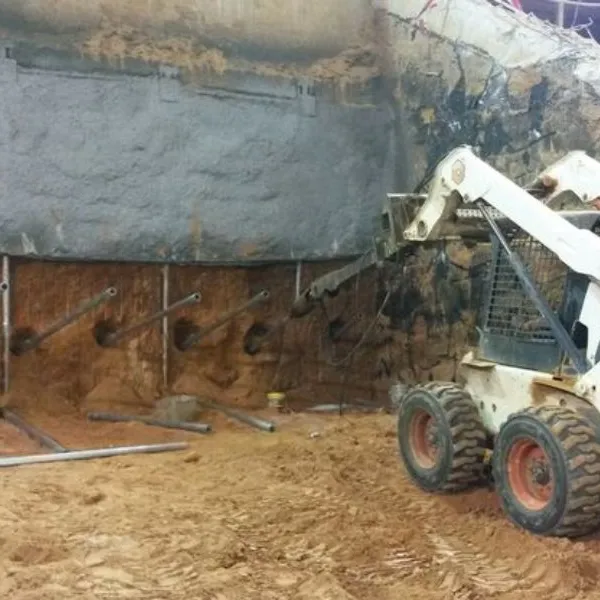
Blog Post
Common Foundation Issues in Georgia, Florida, and Texas and How to Safegaurd Your Property
Posted in Articles
The foundations of homes and buildings serve as the structural backbone, ensuring stability and longevity. However, different regions across the United States experience unique foundation challenges due to their specific climate conditions, soil compositions, and environmental factors. Georgia, Florida, and Texas, in particular, are known for prevalent foundation problems that can lead to costly repairs and structural instability if left unaddressed.
Understanding these common foundation issues can help homeowners and property managers take preventive measures, identify early warning signs, and seek effective solutions to mitigate damage.
Foundation Issues in Georgia
1. Expansive Clay Soil
Georgia is known for its red clay soil, which is highly expansive. This type of soil absorbs moisture and swells during rainy seasons and then contracts when dry. These constant shifts can lead to:
Foundation Cracks: The movement of the soil causes stress on the foundation, leading to visible cracks in walls, floors, and masonry.
Uneven Floors: As the soil expands and contracts, it creates an uneven base, leading to tilted or sloped floors.
Door and Window Misalignment: The shifting foundation can cause doors and windows to stick or fail to close properly.
2. Erosion and Drainage Problems
Georgia's frequent rainfall can lead to poor drainage around a home's foundation. Water pooling near the foundation can erode the soil and create voids under the structure, resulting in foundation settlement and instability.
3. Tree Root Intrusion
Large trees near homes can cause foundation issues by extracting moisture from the surrounding soil, leading to soil shrinkage and uneven settlement.
Foundation Issues in Florida
1. High Water Tables and Flooding
Florida's low elevation and proximity to coastal waters mean that high water tables are common. When the water table rises, it can cause:
Soil Erosion: Water washing away supporting soil can lead to foundation shifting and sinking.
Flood Damage: Excess water exposure can weaken concrete foundations and lead to cracks.
Mold and Mildew Growth: Persistent moisture can seep into foundation materials, fostering mold and structural weakening.
2. Sinkholes
Florida sits on limestone bedrock, which can dissolve over time due to acidic rainwater and underground water movement. This process creates underground voids, leading to sudden sinkhole formations that can cause catastrophic foundation failure.
3. Poor Soil Composition
Many areas of Florida have sandy soil, which does not provide strong support for heavy structures. Homes built on sandy foundations are more prone to settlement issues over time.
Foundation Issues in Texas
1. Expansive Clay Soil and Drought
Like Georgia, Texas has large areas of expansive clay soil, particularly in cities like Dallas, Houston, and Austin. The frequent cycles of wet and dry weather cause extreme swelling and shrinking of the soil, leading to:
Slab Cracks and Fractures: Foundations can crack as the soil movement exerts pressure on concrete slabs.
Foundation Heaving and Settling: Uneven soil movement can result in portions of a home sinking or rising.
2. Extreme Weather Conditions
Texas experiences prolonged droughts followed by heavy rains, leading to drastic changes in soil stability. These extreme conditions exacerbate foundation problems by causing:
Rapid Soil Contraction: During droughts, the soil loses moisture and shrinks, creating foundation gaps.
Flash Flooding Erosion: When heavy rains arrive, dried-out soil cannot absorb water efficiently, leading to runoff and erosion around foundations.
3. Plumbing Leaks and Underground Water Issues
Leaks from plumbing pipes, particularly in slab foundations, can go undetected for years. Over time, the water weakens the soil underneath the home, causing foundation movement and settlement.
Signs of Foundation Problems
Homeowners in Georgia, Florida, and Texas should watch for these warning signs that may indicate foundation issues:
Cracks in walls, floors, and ceilings
Gaps between walls and floors
Doors and windows that stick or don't close properly
Uneven or sloping floors
Water pooling near the foundation
Separation of bricks or masonry joints
Chimney tilting or shifting
Preventive Measures for Foundation Stability
1. Proper Drainage System
Installing gutters, downspouts, and French drains helps direct water away from the foundation, reducing the risk of soil erosion and water damage.
2. Soil Moisture Control
Maintaining consistent moisture levels in the soil around a foundation helps prevent excessive swelling and shrinking. Using soaker hoses or irrigation systems during dry seasons can help stabilize the soil.
3. Regular Inspections
Conducting annual foundation inspections can help detect early signs of damage before they become costly problems. Homeowners should check for cracks, settlement, and shifting structures.
4. Tree and Vegetation Management
Planting trees at a safe distance from the home prevents root intrusion and excessive moisture loss from the soil.
5. Strengthening Foundations with Helical Piles
For homes in high-risk areas, reinforcing foundations with helical piles can provide long-term stability and prevent future foundation movement.
Foundation problems in Georgia, Florida, and Texas arise from various environmental and soil-related factors. Understanding these challenges can help homeowners take proactive measures to protect their properties from costly damage. Regular inspections, proper drainage, and soil management are essential steps in preventing foundation failures.
If foundation issues are already present, it is crucial to seek professional assistance from Cantsink LLC assess and implement the right solutions to restore structural integrity and stability.
